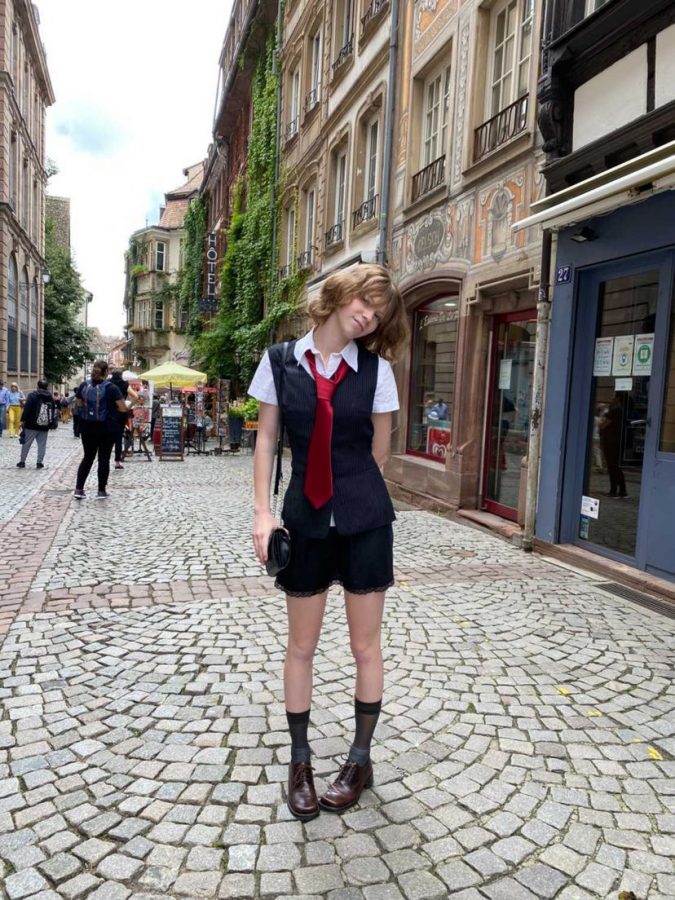Style after staying at home
November 5, 2021
The COVID-19 pandemic created one of the most drastic shifts in fashion that America has seen in such a short amount of time. Throughout the workplace, school and especially at home, fashion became more about feeling comfortable and
expressing personality rather than following usual U.S. fashion norms.
Fashion styles tend to repeat themselves and overlap. In the fall of 2019, students returned to school from summer break and set the scene for pre-pandemic fashion.
The pandemic blindsided all of America’s industries. The stock market plummeted, people were being laid off left and right. The predicted effect the pandemic would have on employment in comparison to population was nowhere near what actually happened according to the United States Census Bureau. Decline in the employment-to-population ratio in the United States in April 2020 was something no one could have predicted. The employment to job ratio predicted a 61.3% ratio of the population being employed, this number was actually 50.1%. Meaning instead of more of the population being employed, 10% of the U.S. population lost their jobs. Mckinsey reported that the global fashion industry’s profit from 2019 to 2020 was expected to drop 93%. While we don’t know all the data for the fashion industry’s profits, we can look at the downward trends suffered by one of the world’s biggest online retailers, Amazon.com. Mckinsey found that apparel and footwear sales for the retail giant both dropped by 41%. The fashion industry virtually collapsed, people simply were just not buying clothes.
For students, online school created an environment where they weren’t being seen by their peers or teachers. Routines changed; what used to be waking up, taking a shower and putting together an outfit for the day to look presentable, turned into rolling out of bed– or not even leaving bed– and staying in pajamas all day.
In April, clothing sales fell by 79% in the U.S., yet sweatpant sales soared up by 80%, according to The New York Times. People looked for an alternative to pajamas. Both kids in online school and adults working from home needed that layer of comfort, as they weren’t required to look presentable. This marked the beginning of a comfortable fashion movement.
As the sweatpants industry thrived during the pandemic, teenagers began to look for comfortable, affordable and presentable clothing choices as the world began to open up again. To many, the answer was thrift stores, as COVID-19 restrictions loosened and stores began to re-open to the public, interest in thrift stores rose among teenagers, going from ranked 44th to 13th in teenagers favorite retailers, said Insider. Thrifting for second hand clothing has become popular among Madison High School students. On the Madison Hawk Talk Instagram two polls asked students if they’ve thrifted before and if they feel that their style has relaxed since 2019. Out of 16 students that responded, 14 responded saying that they had thrifted before. Sydney Topoleski claims her entire closet contains thrifted clothing.
“I definitely feel like my style has changed,” said Topoleski. “I wear a lot more unique pieces of clothing, my style isn’t really more relaxed or sophisticated, just different.”
Topoleski, a long time thrifter enjoys this alternative shopping and uses it as her main source of clothing.
“I’ve actually been going thrifting with my dad since I was little, but I didn’t use it as an actual source of clothing until one day I found a flannel that I loved. Ever since then I have gone thrifting whenever I needed clothes.” Topoleski said.
She enjoys thrifting for a variety of reasons and not just for the style.
“Thrifting is for sure one of the things that’s allowed me to be more comfortable in expressing myself, and it’s a lot better for the environment than shopping new so it’s totally guilt free and lets me be creative with my style,” Topoleski said. “I can get clothes I want without spending hundreds of dollars, and many of the clothes thrifted are definitely more comfortable because they’re a little worn-in.”



